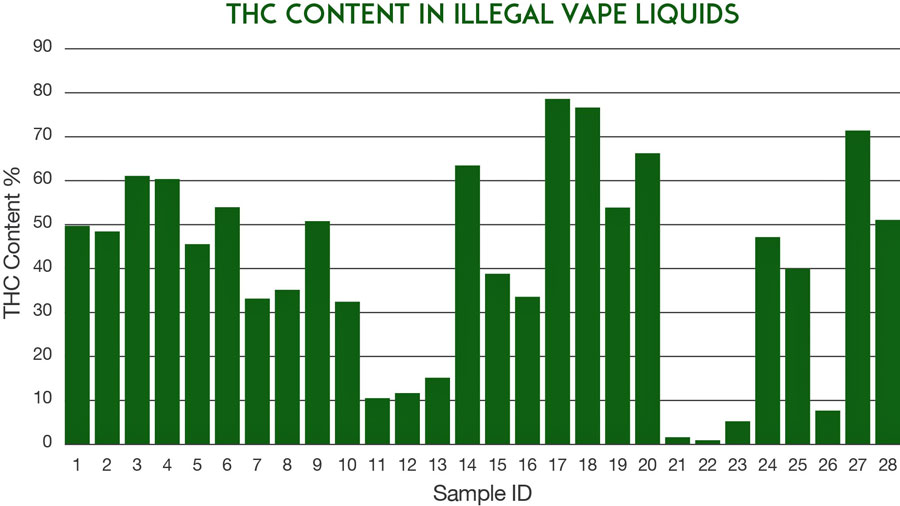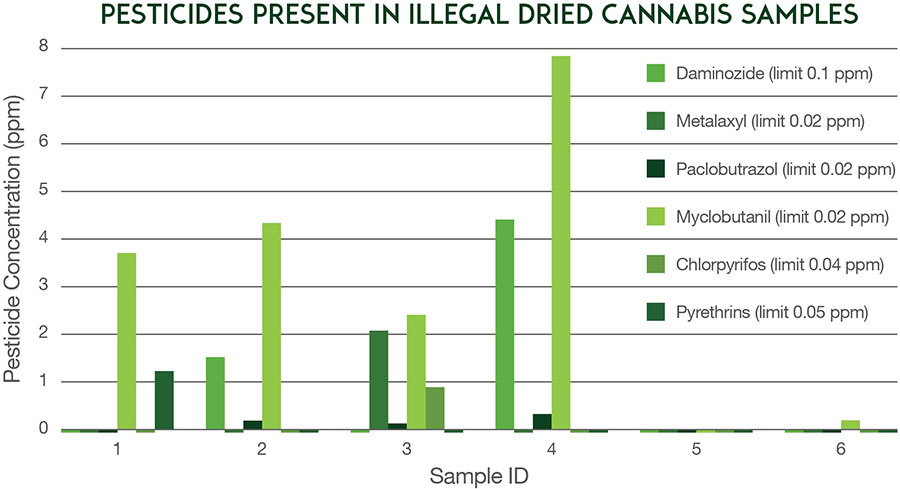ORILLIA – OPP officials say tetrahydrocannabinol (THC) and pesticide analysis of illegal cannabis shows consumers should break ties with their “dealer” and switch to legal products.
“It’s time to know what you’re purchasing and break up with your weed dealer – for your own health and safety,” states a Nov. 25 press release from the OPP.
In 2020, the OPP had cannabis, seized from across the province, tested and the findings “provide insight into the deceptive and unsafe illegal cannabis products being sold on the illicit market,” police say.
For example, based on test results from the National Research Council of Canada (NRC), delta-9-THC content of illegal cannabis vape products ranged from less than one per cent to almost 80%.
“While the majority of the illegal samples did not advertise THC levels on the packaging, the six samples that claimed to have THC content greater than 90 per cent actually measured values from 45 to 60 per cent,” states the OPP release.
“By contrast, another study demonstrated that legal cannabis vape liquids from the Ontario Cannabis Store (OCS) can be consistently produced with greater than 80 per cent THC content.
“In addition to the greater risk of harmful fillers and contaminants with low THC content, this research shows your weed dealer may not be giving you the potency you expect.”

Testing also showed varying levels of THC in illegally-sold products, which often contradicts claims on packaging. (OPP image)
The NRC analysis also showed high levels of pesticides in all illegal samples, with myclobutanil being the most prominent, ranging from 0.3 parts-per-million (ppm) to over 500ppm – several thousand times higher than the detection limits set by Health Canada.
Myclobutanil can generate hydrogen cyanide when heated, a dangerous toxic compound that is linked to various cardiovascular, respiratory and neurological illnesses.
In addition to vape liquids, several illegal dried cannabis samples had myclobutanil present, in addition to metalaxyl, chlorpyrfos and pyridaben, in some cases at levels 100 times higher than listed limits.
“High levels of pesticide residue present significant health complications for cannabis consumers,” police say. “These pesticides are not only harmful to consumers, they could also pose a risk to the surrounding communities.”
During one inspection of an OPP-led Provincial Joint Forces Cannabis Enforcement Team’s (PJFCET) takedown in November 2020, MECP found large open holding tanks filled with liquid fertilizer connected to a storm water pond that ultimately discharged into a municipal drain.
Approximately 75,000 containers of soil were found at the location, and through a small sample collection, the presence of several hazardous pesticides that require special management were identified.
Over the last two years, the PJFCET’s focus has been to remove unsafe, illegal cannabis from communities by dismantling illegal storefronts, cannabis grow operations and online cannabis sites.
“The OPP remains committed to unmasking the threats inherent with criminal cannabis,” stated Rachel Huggins, OPP deputy director and executive lead of cannabis legislation.
“We will continue work with our various partners to expose the health and public safety risks related to the illegal market. The test results are clear evidence that consumers don’t know what they’re getting when they purchase illegal cannabis products and how important it is to know the facts.”



